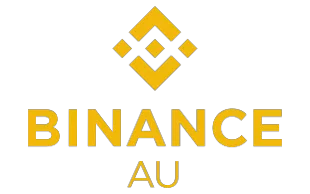The competitors
CoinSpot has been around since 2013 and has garnered a reputation as being one of Australia's leading cryptocurrency exchanges. It has over 2.5 million registered members at the time of writing, more than any other exchange based in Australia. The platform's simple user interface, wide range of coins and strong security history make it a frequent choice for newcomers to crypto.
Binance was launched in 2017 and quickly ascended to become the world's most popular cryptocurrency exchange in terms of trading volume and active userbase. Binance supports a plethora of coins and features including an NFT marketplace, earning opportunities and advanced trading options.
We've compared these 2 exchanges head-to-head in 5 categories including fees, coins and payment methods to help you choose which platform is best suited to your specific cryptocurrency needs.
If you like, you can jump straight to the verdict to see which exchange we think comes out on top.
General overview
 |  | |
| Finder Score | 4.0 ★★★★★ | 4.0 ★★★★★ |
| Trading Fee | Maker: 0.0110 – 0.1000% Taker: 0.0230 – 0.1000% | 1% |
| Deposit method | Credit card,Cryptocurrency,Debit card,P2P,Revolut Pay | Bank transfer,Credit card,Cryptocurrency,Debit card,PayPal |
| Withdrawal Fees | AUD: Not supported Cryptocurrency: Fees vary | AUD: None Cryptocurrency: Fees vary |
| 24/7 support? | Yes | Yes |
| App available? | Yes | Yes |
| Go to site More info | Go to site More info |
CoinSpot is an Australia-based exchange operating out of Melbourne. Binance is a registered entity in the Cayman Islands, although it has over 40 offices located around the world.
Both exchanges are registered with Australia's regulatory body, the Australian Transaction Reports and Analysis Centre (AUSTRAC). Because of this, both platforms are compliant with Australian anti-money laundering (AML), know your customer (KYC) and counter-terrorism financing (CTF) laws.
CoinSpot and Binance are equipped with a large range of features, including support for a multi-token cryptocurrency wallet.
Binance users can earn rewards on their crypto investments via staking. Both exchanges have NFT marketplaces.
Notably, Binance's success has allowed it to create a native blockchain to complement its exchange. Known as the Binance Smart Chain, this network has expanded Binance's capabilities to the decentralised finance (DeFi) world and allows its customers to participate in advanced crypto opportunities like yield farming and liquidity provision.
Round 1: Supported coins
 |  | |
| Number of tradeable crypto assets | 396 | 536 |
| Go to site More info | Go to site More info |
CoinSpot and Binance both have a large range of cryptocurrencies available to buy and trade. The number of supported coins is almost identical.
Due to this, neither platform has a particular advantage when comparing supported cryptocurrencies. Most investors will be able to find the asset they want to purchase on either exchange.
Round 2: Supported fiat currencies
 |  | |
| Number of supported fiat currencies | 115 | 1 |
| Go to site More info | Go to site More info |
CoinSpot is an Australian exchange, and only supports Australian deposits and withdrawals (in addition to cryptocurrency).
Binance is a global exchange and supports a wide range of fiat currencies although you can no longer transfer AUD via bank transfer or PayID. This has also caused Binance to remove their AUD-denominated markets. The only way to buy crypto directly using fiat with Binance is to use a credit or debit card, both of which attract a fee.
Most trading on Binance is done against US dollar stablecoins, BTC, BNB and ETH.
Round 3: Costs
 |  | |
| Minimum deposits | $50 | $1 |
| Deposit Fees | Cryptocurrency: None | Bank transfer and PayID: None Cash: 2.5% Card: 1.88% |
| Trading Fee | Maker: 0.0110 – 0.1000% Taker: 0.0230 – 0.1000% | 1% |
| Withdrawal Fees | AUD: Not supported Cryptocurrency: Fees vary | AUD: None Cryptocurrency: Fees vary |
| Go to site More info | Go to site More info |
CoinSpot now has a very competitive fee structure, with a fee of 0.1% on market orders (depending on the cryptocurrency) and 1% on instant buys. On top of no withdrawal or deposit fees, CoinSpot is a good choice for Australians looking for value on their crypto purchases.
Binance is one of the most competitively priced exchanges available to Australians, with lower fees compared to most of its competitors. Binance's trading fee ranges from 0% to 0.1%, varying based on volume and whether you're a "maker" or a "taker".
In addition, CoinSpot has rather high spreads, especially in comparison to Binance. Spreads are the difference between the price of an asset at the time of purchase and the price it is sold to you. These spreads fluctuate frequently depending on the cryptocurrency, but CoinSpot customers have reported spreads of up to 4%.
Conversely, Binance's spreads have progressively tightened, averaging well under 1% per transaction.
However, if you'd prefer to use market orders, you'll pay a default 0.1% maker fee on both exchanges.
Round 4: Deposit methods
 |  | |
| Deposit methods | Credit card, Cryptocurrency, Debit card, P2P, Revolut Pay | Bank transfer, Credit card, Cryptocurrency, Debit card, PayPal |
| Go to site More info | Go to site More info |
CoinSpot offers support for most major Australian deposit methods for fiat currency. Instant bank transfers through POLi and PayID can be used without a fee, alongside traditional bank transfers (which take a few days to deposit). CoinSpot even offers physical cash deposits, allowing Australian residents to add funds to their accounts at supported newsagents around the country.
Binance no longer accepts AUD bank deposits.
Both exchanges accept credit and debit card deposits, although this is where fees are highest.
Round 5: What our users are saying
Finder users have left over hundreds of reviews for both CoinSpot and Binance which are overwhelmingly positive for both.
CoinSpot scores an average of 4.3/5 while Binance gets 4.8/5.
CoinSpot reviews
A common theme among CoinSpot users is praise for how easy the platform is to use and its beginner-oriented features. Customer support is also well regarded.
As for criticisms, they tend to focus on issues with account verification and security measures that some users find inconvenient.
Binance reviews
Reviews of Binance praise the smartphone app in particular, which offers all the features of the desktop exchange in a compact format. Users also enjoy the wide range of coins available as well as the extra features like staking.
Binance users appear to critique it for two main reasons – poor customer service and an overwhelming user interface that is not well suited for beginners. Mind you, the Binance App offers a lite mode with a simplified interface which is tailored to beginner investors.
Winner: Binance
There's few things separating Binance and CoinSpot overall. Both exchanges have a broad range of supported cryptocurrencies, support AUD purchases in some format and a number of additional earning opportunities. Both exchanges have a relatively good security track record and are registered with AUSTRAC. Binance even has an insurance fund of over US$1 billion to cover loss of funds.
Where Binance really edges out CoinSpot is its low fees – which are some of the most competitive you can find on the exchange market. CoinSpot has a straightforward fee structure and now actually matches Binance on spot market fees, but has much higher spreads.
CoinSpot does have some advantages – its user interface is easier to navigate for novices, and Aussie residents may feel more comfortable registering with a local business. CoinSpot's other big advantage is that it supports free AUD bank deposits and withdrawals.
Binance only supports AUD card payments, which mean you'll need to pay a fee whenever you want to buy or sell crypto with AUD via Binance.
Overall, it's worth remembering that there's no such thing as a "best" exchange – only exchanges that are "best" for you. The platform you end up choosing will reflect your specific circumstances, and you may even end up using features from both.
Frequently asked questions
Ask a question
More guides on Finder
-
Bitget review
Bitget is a fully-featured crypto exchange, but how does it actually measure up?
-
CMC Invest crypto review
Insightful review of CMC Invest's crypto trading features, security and fees for 2024.
-
Bybit review
We reviewed Bybit, a global crypto exchange most known for its speciality in crypto derivatives.
-
Swyftx review
Swyftx is one of Australia's most beginner-friendly exchanges, with an emphasis on user experience and customer satisfaction.
-
Digital Surge review
Dive into Digital Surge’s array of uniquely Australian features and discover if the platform’s fees, trading options and interface are right for you.
-
Gate.io review
What are the pros, cons and headlining features of the Gate.io cryptocurrency exchange? Find out in this comprehensive review.
-
Binance Australia review
In this deep-dive review we look at the trading and investment options available, and assess what type of cryptocurrency investor Binance is right for.
-
eToro crypto review
If you’re thinking of trading cryptocurrencies on eToro, make sure you check out our comprehensive eToro review first.
-
Kraken crypto review Australia
Kraken is a reputable bitcoin and altcoin exchange that is designed with the advanced trader in mind.
-
Independent Reserve review
Read the full review of Independent Reserve if you’re thinking of cryptocurrency trading.

